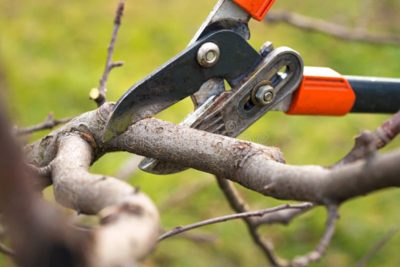I have a variety of fruit trees at my La Canada home: lemon, orange, lime, apple, fig, pomegranate, and plantain. Unfortunately, I have had tree trimmers ruin my trees, and they don’t produce for several years. When is the best time to cut fruit trees in Southern California? The best time to prune or cut back fruit trees in Southern California depends on the type of fruit tree you’re dealing with, but here are general guidelines:

Try not to prune in late summer, as this can stimulate new growth that won’t harden off before winter, increasing disease vulnerability.
Deciduous Fruit Trees (like apples, pears, peaches, plums, nectarines, apricots, cherries, and figs):
Late Winter to Early Spring: The best time is typically from late December through February. Just before or as the tree begins to bud. This timing is optimal because the tree is dormant, reducing the risk of disease entry and allowing for vigorous new growth in spring. Pruning during dormancy also makes it easier to see the tree’s structure.
Citrus Trees:
Late Winter: Citrus trees can be pruned anytime but are best pruned in late winter. Around late February to early March, after the risk of frost has passed but before the new growth starts. Citrus trees aren’t dormant, so this timing helps minimize sap loss and disease.
Avocado Trees:
Early to Mid-Spring: Avocados are pruned after the threat of frost has passed. Typically from March to May, to avoid cold damage to new growth. The aim is to prune just before the new growth spurt to shape the tree and remove dead or diseased wood.
Subtropical Fruits (like guava, mango, and papaya):
Light Pruning Anytime: These trees can be lightly pruned anytime to control size or shape. However, heavier pruning is often best after fruiting, which, for many, can be done late summer to early fall.
Always consider the specific needs of the tree species, its health condition, and local microclimate variations within Southern California. If in doubt, consult with local arborists.




